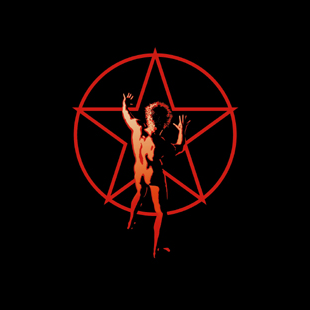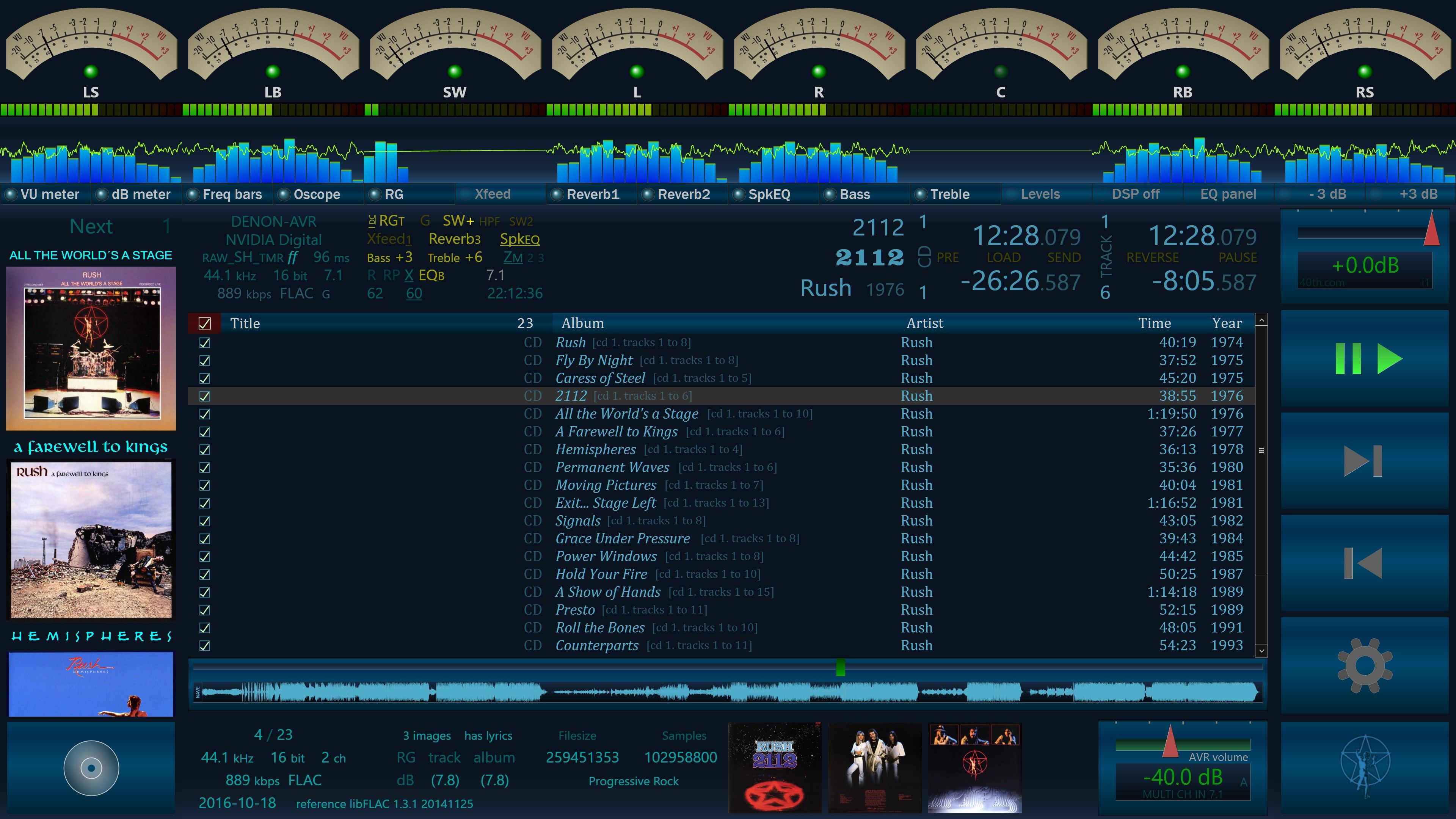
Jukebox 2112

App details
About Jukebox 2112
Jukebox 2112 (v21.12.222) plays FLAC CD, FLAC CD singles, FLAC, MP3, M4A (AAC and ALAC), Ogg (Vorbis), and other music tracks. It has the best-sounding DSPs available. It edits metadata. It rips audio CDs. It burns audio CDs. It exports for in-car play of your entire music library (there is a maximum compatibility option on export for limiting images to baseline JPEG, 600x600 max. size, and around 100 KB).
Check out the 10-minute video to see just some of it in action.
-
Native x64 and native Arm64 packages
-
FLAC tracks with an embedded cuesheet play as if they were a CD, with per-track titles, durations, and lyrics; these like-CD tracks can also have playlists generated that allow loading these by individual tracks, or to be decoded to individual PCM .wav files, or exported to .mp3 (et al.), one per track.
-
Gapless playback is always available with lossless formats (.ALAC, .FLAC, WMA-LL, and .WAV), and is possible even for lossy formats
-
WASAPI audio output with both shared, and if needed, exclusive access, to the selected audio device
-
Denon/Marantz network remote control, including zones
-
Audio engine analysis - you may have PERFECT shared mode output
Import/Export:
-
Import from audio CDs, or from one or more .wav + .cue pairs, and create a FLAC CD; from the FLAC CD all things are possible (by way of export)
-
Export all checked tracks from your music library to a thumb drive (or any drive), to a .wav + .cue, or to a gapless CDDA burn to a CDR/CDRW, with optional CD-TEXT
Signal processing includes:
-
ReplayGain and Soundcheck values are recognized, with fine-tuning available
-
On-the-fly RGCalc option to calculate the ReplayGain (v2) value for tracks that don’t have an RG value
-
Creating a subwoofer channel for low frequencies from the main two channels (2.0 becomes 2.1); extensive control is available
-
Creating with the subwoofer channel, a surround channel pair or two pair (2.1 becomes 5.1 or 7.1); reverb can be applied differently to the surround channels, to great effect - like being there, in concert
-
Creating with the subwoofer channel, a discrete secondary subwoofer channel (2.1/5.1 becomes 4.2 to 4.4)
-
Headphone crossfeed to make headphones sound more like loudspeakers, with adjustable parameters
-
Multi-channel reverb, with selectable modes and, if desired, extensive control at a per channel-pair level
-
Simple-to-use bass and treble tone controls for the front two channels, with adjustable parameters, including selection of PEQ or shelf filter types; quick peek of filter response by hovering over the [Levels] pushbutton
-
1/3rd-octave multi-channel EQ, and control for up to eight channels, in four channel-pair groupings; quick peek of levels by hovering over the [EQ panel] pushbutton
-
Speaker EQ (parametric EQ) for contouring each loudspeaker individually (Bose 901 EQ emulation included; easy to create more with the graphical Speaker EQ editor [Settings, SpkEQ, then press the Speaker EQ parameters button) - filters include PEQ, LS, HS, LP, HP, BP, BP2, NOTCH, and DELAY; up to 40 filters can be specified per speaker EQ file, with overall gain of the filter file
-
DC offset removal
-
Tone file creator: create tones, sweeps, white noise, 1 to 7.1 channels
-
Digital-out warm-up option for HDMI and S/PDIF destinations; ensures that after a device format change the first few seconds of the next track are not cut off
-
Optional local control of volume for exclusive audio modes of devices that do not offer hardware volume control (e.g., Nvidia Digital)
-
Optional down/up volume ramp on play transitions (Things panel), and adjustment of VU meter ballistics
-
The Channel Isolator (right-click on a VU meter, or Ctrl+i)
User interface and visualizations include:
-
Large controls allowing touch screen-only use, or easy keyboard tabbing/spacebar select
-
VU meter, dB meter, frequency bars, and o’scope, one of each per channel, updating at up to 60 FPS
-
Hover over the [EQ panel] pushbutton to show all EQ slider positions for each of the eight channels in the VU meters (or right-click that pushbutton, or press-hold for touchscreens); similarly for the tone controls by hovering (when playing) over the [Levels] pushbutton
-
Easy-to-access pushbutton activation of DSP features, including a DSP off button to enable/disable all DSPs quickly
-
Album covers are displayed for upcoming tracks, and information on the currently selected track is also shown; all images can be animated on track changes
-
The art panel can be zoomed/panned; images can be saved as files from the art panel
-
The program window can be sized from tiny to fullscreen, with the contents scaling with the change of size
-
Tracks picked for play are viewed in the track listview, with Search of the internal database available to flag matches by checking or unchecking each match
-
Each column header of the track listview has sorting and other actions
-
Each individual track has actions in its title and checkbox columns, such as adding the track to a playlist, or decoding it to a PCM .wav file with metadata included, or export a track at a time, or all checked tracks one after the other
-
Select from/save to 9 settings groups; makes it easy to switch from 7.1 to 4.2 to headphones mode, EQ settings included
-
Unmask backmasking (play/save a selected part of the track in reverse - hover on the waveform in the extended seekbar for tips on how)
-
Audio device topology mixer - control the device’s hardware mixer from within Jukebox 2112
-
Multi-instance capable: can be started from the command line; to begin a second (or later) instance, include the -iname xyz switch, such as: JUKEBOX2112.EXE -iname i2 where i2 is the literal instance name
-
Optional cool Vue (Visual User Experience) (Theme panel)
-
Option to automatically save at exit all checked tracks in the tracklist for restore on the next Jukebox 2112 start, with the last played track selected; it auto-plays that track if it was playing when Jukebox 2112 was closed
-
Select the locale/language for NLS sorting of title, album, artist/composer
-
Edit metadata for MP3, M4A (AAC and ALAC), FLAC, WMA, Ogg (Vorbis), Opus, and WAV; ReplayGain v2; trailing silence frames tag processing – operate on a track at a time, or on checked tracks as an album
No external database is used (i.e., no database is stored on disk). SSD-located tracks are FULLY PARSED for metadata at a rate of 1000s of tracks per second to an internal database (over 4000 tracks/second fully parsed if skipping embedded art). Tracks to play are picked by using a standard yet customized file open dialog; individual tracks, playlists, and folders can be added at any time. There is an option to automatically save (see the tracklist’s checkbox column header menu) at exit all checked tracks in the tracklist for restore on the next start, with the last played track selected (it auto-plays that track if it was playing when Jukebox 2112 was closed).
Each track is fully loaded and decoded into memory, and playback is still immediate and completely gapless.
Key features
-
Multi-channel 1/3rd-octave graphic EQ, and parametric speaker EQ with GUI editor
-
Multi-channel reverb (use the SpkEQ delay filter on surrounds for even greater effect)
-
Headphone crossfeed
-
Gapless playback
-
True FLAC embedded cuesheet play
-
ReplayGain/Soundcheck handling, On-the-fly RGCalc (ReplayGain v2)
-
Create 2.1/5.1/7.1 to 4.4 from 2-ch stereo
-
WASAPI audio (shared and exclusive; timer and event)
-
Import from CD-DA; import from multiple .wav + .cue pairs
-
Edit metadata for MP3, M4A (AAC and ALAC), FLAC, WMA, Ogg (Vorbis), Opus, and WAV; trailing silence frames tag processing
-
Speaker EQ and Speaker EQ GUI editor: create DSP filters for each channel, such as emulating a Bose 901 EQ; separate per-channel DC offset removal; Speaker EQ Editor to easily create speaker EQ files
-
Backmasking unmasked: play/save a selected part of a track in reverse
-
Audio device topology hardware mixer; Audio engine analysis
-
Multi-instance capable
-
Denon/Marantz remote network control, including zones
-
Tone file creator
-
Volume down/up ramp on play and seek transitions
-
Local volume control option for exclusive audio modes that otherwise have no volume control
-
Export checked tracks to a thumb drive, or make a .wav + .cue from them, or burn them to CD-R/CD-RW disc
-
CD ripper and CD writer / CD burner